
Xiamen: A City Where The Tide Of Reforms Meets Unwavering Determination
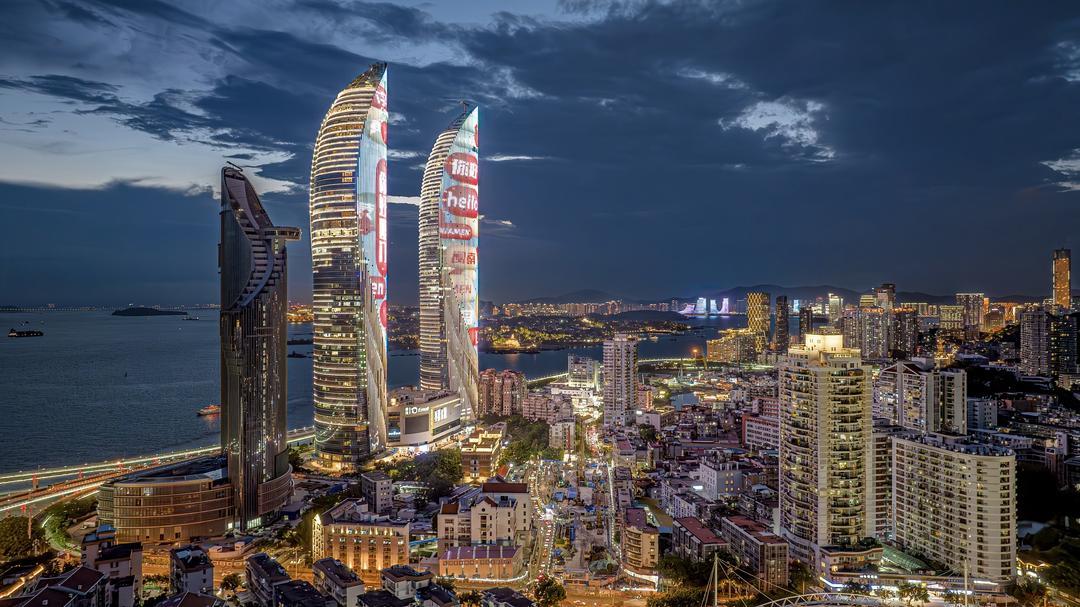
Xiamen, a city where“the sea is within the city, and the city is on the sea”
Xiamen, what kind of city is it?
To many, Xiamen is a city associated with its rich Minnan culture, picturesque coastal scenery, and deep-rooted heritage, making it a popular tourist destination. Its distinctive spatial layout, where“the sea is within the city, and the city is on the sea,” has catapulted it to fame, earning it the title of“first-generation internet celebrity city.”
Xiamen's high tourism recognition, stunning ecological environment, and strong urban presence solidify its status as a seasoned internet sensation, serving as a model for countless other cities to follow. Yet, being an“internet celebrity” alone fails to capture its true essence. Beyond its captivating“good looks” lies a city of high quality, forged through reform, openness, inclusiveness, and innovation, making it a modern and international metropolis.
Xiamen is a city that attracts young people seeking success, offers a comfortable life for middle-aged residents, provides a fulfilling retirement for the elderly, and is cherished by locals who believe“There's no place like Xiamen.” It is also a city that countless newcomers see as a place that embodies their dreams of“poetry and distance.”
These rich and diverse perceptions converge to create a three-dimensional and diverse image of Xiamen: a captivating, high-quality, modern international city that stands at the forefront of reform.
1.A City of Reform
Xiamen, is a city truly deserving of its title as a city of reform.
It has its Reform Heat Index once again topped the list of 19 cities at the vice-provincial level or above in China, according to the nationwide Reform Heat Evaluation Report for the second quarter of 2024.
This isn't the first time Xiamen has topped the charts in reform. Indeed, Xiamen Special Economic Zone was born out of reform and thrived because of it, hence earning it the accolade of being“a microcosm of China's journey of the reform and opening-up.”
The Xiamen Special Economic Zone Memorial Hall houses a witness to the city's reform and opening-up journey: the“Lujiang” yacht that Deng Xiaoping took during his visit to Xiamen in 1984.
Photo courtesy of Xiamen Party History and Local Chronicles Website
When people think of special economic zones, Shenzhen is usually the first to come to their mind. However, alongside Shenzhen, Xiamen, Zhuhai, and Shantou were also designated as special economic zones in 1980.
Like Shenzhen, in just over four decades, Xiamen has witnessed a miraculous transformation, growing from a small city to a thriving metropolis with economic growth nearly 1,000 times. Both cities have shown the same spirit of daring to break new ground, serving as“experimental fields” and“front-runners” of reform. However, at each critical juncture, Xiamen has really stepped up its reform efforts, even more so than Shenzhen.
From establishing the special economic zone to spearheading the development of a socialist market economic system, from becoming a vice-provincial city to one of the only five cities with independent planning status, and then embracing the pilot free trade zone, the independent innovation demonstration zone, the BRICS PartNIR Innovation Center, and the demonstration zone for the integrated development across the Taiwan Strait...,
Xiamen has become one of the areas with the highest density of pioneering policies, the greatest intensity, the most concentrated measures, and the most prominent effects of system integration.
Over four decades, countless“firsts” have emerged from Xiamen. The city was the first in China to propose the“small government, big society” principle, the first to establish a financial system for a special economic zone, the first to establish a Sino-foreign joint venture international bank, the first to launch China's local airline, the first to initiate the“Multi-regulation Integration” reform, and the first to introduce a“Three Division Co-Management” medical system for tiered diagnosis and treatment. These“firsts” not only underscore Xiamen's golden credentials as a“city of reform” but also highlight the spirit of bold innovation and pioneering spirit that characterizes the special economic zone.
Xiamen International Bank (XIB) was established on August 31, 1985, as the first Sino-foreign joint venture bank in the mainland of China.
Today, at a crucial juncture for comprehensive deepening of reform, Xiamen has been tasked with comprehensively deepening the reform and opening-up, promoting high-quality development, and fostering cross-strait integration and development. By taking the lead in carrying out comprehensive reform pilots, the city has been included in the first batch of national programs of the Digital Transformation Pilot for SMEs, the Integrated Domestic and Foreign Trade Pilot, the National Comprehensive Circulation Strategic Pivot City, the Pilot for the Redevelopment of National Inefficient Land Use, the Pilot of High-level Opening for Cross-border Trade and Investment.
Why has Xiamen consistently been entrusted with these crucial reform initiatives?
From the very beginning of China's reform and opening-up, Xiamen's designation as a special economic zone was a natural fit, given its strategic location as the literal meaning of the name: the“gate of a building.” Situated in close proximity to Taiwan and at the forefront of China's opening-up, Xiamen benefits from a unique confluence of Minnan and maritime cultures, providing it with an unparalleled advantage as a pioneer.
Over the past four decades, Xiamen's economic output has soared from less than 1 billion yuan to over 800 billion yuan, positioning it as a strong contender for the next trillion-yuan GDP city. Its total foreign trade import and export volume has leaped from less than 100 million US dollars to 947 billion yuan, ranking it 11th among China's top 100 foreign trade cities. The city's scientific and technological competitiveness has also entered the top tier, as it has been included in the global top 100 technology clusters and ranked 38th globally for leading research cities and metropolitan areas.
This remarkable growth in economic strength, trade competitiveness, and scientific innovation has propelled Xiamen's urban development and overall competitiveness, establishing it as one of the key central cities in Southeast China. Xiamen is both capable and equipped to shoulder even greater responsibilities.
As outlined in the“14th Five-Year Plan,” Xiamen's new goals include constructing the International Shipping Center, the International Trade Center, the International Tourism Exhibition & Convention Center, the Regional Innovation Center, the Regional Financial Center, and the BRICS Partnership on New Industrial Revolution Innovation Center, which are referred to as the“five centers and one base.”
A Xiamen Airlines passenger plane soars over the Qingshui Palace in Xiamen, as the city presses ahead with the construction of its new international airport.
Beyond its impressive urban competitiveness, Xiamen's journey of reform has been marked by a boldness of“daring to be the first,” a willingness“to venture into deep waters,” and a determination“to tackle tough challenges.” which are indispensable qualities for the new round of comprehensive deepening of reform.
Over the past four decades, Xiamen has pushed the boundaries of waves of innovation, tackling numerous challenges head-on, and implementing a lot of positive practices. This relentless pursuit of progress has not only made the“Special Zone Speed” synonymous with Xiamen but has also contributed a multitude of replicable and scalable experiences to China.
Xiamen has taken the current role as a pilot city for comprehensive reforms, transcending the traditional model of“single-point breakthroughs.” Instead, it integrates reforms across state-owned enterprises, investment and financing systems, free trade zones, business environments, and other areas. This involves everything from high-standard market systems to the creation of an open and innovative industrial ecosystem, social sector reforms, and the enhancement of modern urban governance, requiring a new reform mindset that is systematic, holistic, and coordinated.
This represents a higher goal, a heavier responsibility, and a greater expectation for Xiamen as a“city of reform.”
2.A City Embracing Openness
Openness has been the inexhaustible driving force behind Xiamen's economic development.
Under Xiamen's roof, guests from afar do stay. Through its port, waves roll in without delay. Historically, Xiamen has served as a vital port for commerce and prosperity. Today, as a key node and land-sea hub in the Belt and Road Initiative, it has also become a crucial bridge and link for deepening cooperation among BRICS countries.
The“1985-2000 Xiamen Economic and Social Development Strategy,” published over three decades ago, foreshadowed the city's future by proposing to“expand opening-up and implement certain free port policies.” The strategy outlined a clear, step-by-step approach, encompassing three steps, to establish Xiamen as a“free port-type special economic zone.”
Over the years, Xiamen has steadily progressed, transforming from export processing zones, bonded zones, regional port linkage, and bonded port zones to a Pilot Free Trade Zone and the BRICS Innovation Center, achieving multiple zone overlays and iterative upgrades. Additionally, it has integrated internally with major strategies such as the Yangtze River Delta Integration and the Guangdong-Hong Kong-Macau Greater Bay Area, while externally connecting with BRICS countries and Belt and Road Initiative countries, deeply engaging in global industrial division and cooperation.
Xiamen port and incoming container freighters
In recent years, Xiamen has taken the lead in high-level opening-up by leveraging its pioneering reform mechanisms and institutional advantages.
The city's innovative“cross-border e-commerce + China-Europe Railway Express + Silk Road maritime transport” model has become one of China's“best practice cases.” Meanwhile, the Pilot program of High-level Opening for Cross-border Trade and Investment has spurred robust growth in goods trade, services trade, digital trade, and sustainable trade.
Today, Xiamen has formed a multi-layered open framework, characterized by its Special Economic Zone, the Pilot Free Trade Zone, the Demonstration Zone for the Integrated Development across the Taiwan Strait, the Belt and Road Initiative Open Cooperation Leading Zone, and BRICS Innovation Center. Its total foreign trade import and export volume ranks among the top tier in China, while its actual utilization of foreign investment consistently places it at the forefront nationally.
Data reveals that in 2023, Xiamen's total foreign trade import and export volume reached 947.04 billion yuan, accounting for 48% of Guangdong province's total and ranking 9th nationwide. Its actual use of foreign investment stood at 1.974 billion US dollars, accounting for 45.8% of the province's total and placing it among the top ranks of vice-provincial cities.
In the early days of reform and opening-up, Xiamen's success was largely driven by its pioneering spirit of the reform and opening-up and its strategic location as a natural deep-water port. The city attracted foreign investment and enterprises, expanding its openness and establishing itself as a leading international shipping and trading center in Southeast China.
However, nowadays, as the global geopolitical landscape and international economic and trade situation continue to evolve, multilateral cooperation mechanisms, represented by the Shanghai Cooperation Organization and the BRICS countries, have emerged as increasingly significant forces in maintaining regional peace and stability, promoting international economic and trade exchanges, and fostering knowledge sharing and technological innovation.
Major international cities, represented by Xiamen, are also playing an increasingly pivotal role in building a new paradigm of high-level opening-up.
As early as 2017, Xiamen hosted the 9th BRICS Summit, becoming the latest Chinese city to shine on the international stage, following Beijing, Shanghai, and Hangzhou.
In 2020, during the 12th BRICS Summit, China announced the launch of the BRICS Partnership on New Industrial Revolution Innovation Center in Xiamen. This has positioned Xiamen as a vital bridge for deepening cooperation among BRICS countries in the wake of the new industrial revolution, further solidifying its status as a key platform for high-level opening-up and innovative collaboration.
The 2023 BRICS New Industrial Revolution Exhibition was held in Xiamen.
In recent years, Xiamen has increasingly deepened its cooperation with other BRICS countries. By the end of 2023, the BRICS Partnership on New Industrial Revolution Innovation Center in Xiamen had secured 77 cooperation projects with BRICS partners, with a total investment of 38.5 billion yuan. Furthermore, Xiamen's import and export trade with BRICS countries reached 109.25 billion yuan last year, marking a 14.4% increase compared to the previous year.
Navigating the vast time-space landscape of reform and opening-up and connecting with the world amidst a sea of competition, Xiamen has forged a path of high-quality development by embracing openness and leveraging it to drive reform and development.
4.A City of Inclusiveness
Inclusiveness is a defining characteristic of Xiamen, a city that takes pride in its welcoming spirit.
At the beginning of the reform and opening-up, Xiamen was just a small sea defense town with a population of less than one million. Today, the city's resident population has reached 5.327 million, with over 4 million living in urban areas, putting it on the cusp of becoming a megacity.
Remarkably, Xiamen's total land area is only 1,669 square kilometers, just one-seventh the size of Fuzhou and smaller than Shenzhen, a city renowned for its high population density. Despite its limited landmass, Xiamen has achieved an economic output comparable to many provincial capitals, ranking among the top in both economic and population density nationwide.
Xiamen's significant population growth is largely attributed to the influx of people from other regions. Based on the Seventh National Population Census, Xiamen has seen 2.715 million newcomers from other cities, including 1.3918 million from other provinces and 1.3232 million from within Fujian Province. This represents an increase of 869,700 people, or a 47.1% rise, compared to 2010.
Xiamen University has been a great source of talent support for Xiamen's development.
In Xiamen, over half of the resident population hails from other regions, with half coming from outside the province. This includes not only folks from neighboring Jiangxi, but also large numbers of young people from far-off provinces like Guizhou, Henan, and Sichuan, who have made quite a journey over mountains and rivers to settle down in Xiamen, vividly illustrating the concept of“beautiful peacocks flying to the prosperous southeast.”
Among these newcomers are a diverse array of talents, including international professionals, highly educated individuals, and skilled workers. By the end of last year, Xiamen's total talent pool had reached 1.63 million, including 59,000 international talents and nearly 20,000 high-level talents.
Industry leads people away, while nice surroundings make them stay. Xiamen's strong appeal to people is rooted in its top-tier urban development, robust economic and industrial strength, and a range of attractive recruitment and talent attraction policies that jointly create a“magnetic pull.” Surely this appeal is also inseparable from the city's open and inclusive spirit.
As the economic and cultural center of the Minnan region, the core city of the Guangdong-Fujian-Zhejiang urban agglomeration, and the leading city of the Xiamen-Zhangzhou-Quanzhou metropolitan area, Xiamen stands out in both its urban capacity and overall competitiveness, far surpassing most ordinary cities.
Xiamen has always been generous in its policy support for talent. The“2024 Xiamen Talent Service Month” has recently been launched, marking the continuation of an annual event that has been held for several years. This year, the event will feature 10 high-quality activities and 50 year-round service events, creating an atmosphere where“every month seems like a service month.”
In recent years, Xiamen has successively launched new initiatives to provide free accommodation for job-seeking college graduates, starting with“a suite” for high-level talent,“a room” for key talent, and now,“a bed” for graduates, ensuring housing support for all levels of talent. This year, the city has also unveiled a significant“Together with Lu (meaning Egret Island, another name for Xiamen) · Talent Policy Package,” expanding the coverage of living subsidies and free accommodation for newly recruited talent to include non-full-time postgraduate students, talents from Taiwan, Hong Kong, Macau, and foreign talents.
Nestled between mountains and the sea, Xiamen is renowned as a city ideal for both living and working, attracting a diverse pool of talent.
Just as Beijing, Shanghai, Guangzhou, Shenzhen, and other first-tier cities have their“drifters,” Xiamen also has its“Lupiao” (Xiamen drifters). However, whether they are industrial workers, university graduates, or overseas returnees, all can find their place in Xiamen, transitioning themselves from“Lupiao” to“new Xiamen residents.”
In recent years, Xiamen has been loosening its household registration restrictions. People with legal and stable employment, a valid residence permit, and their own property outside the island can now apply for residency registration directly. Plus, university graduates and other educated individuals can also register within the inner island as long as they meet certain criteria.
The“vote with their moving actions” of the migrant populations, particularly those with high educational backgrounds, is a direct reflection of Xiamen's openness, inclusiveness, and“magnetic pull.”
It is no coincidence that Xiamen has been named“China's Best City for Attracting Talents” for three consecutive years and has been recognized as one of the“Most Attractive Chinese Cities for Foreign Talents.”
4.A City Driven by Innovation
Innovation is a key driver for Xiamen's pursuit of the future.
Recently, the National Science and Technology Awards for 2023 were announced, with 7 scientific research achievements from Xiamen recognized, setting a record-high for the city in terms of the number of awards received.
These scientific achievements span multiple fields, including biomedicine, 5G communications, integrated circuits, semiconductor materials, marine restoration, etc. They encompass both groundbreaking original research and application-oriented technological innovations tailored to meet the needs of industries and public welfare, aligning with Xiamen's strategic layout in foundational innovation, emerging industries, and future industries.
This success comes from Xiamen's forward-thinking investment in developing emerging industries and the rise of a series of top-notch innovation platforms in the city.
Xiamen's strategic layout on emerging industries can be traced back to the 1980s. The“1985-2000 Xiamen Economic and Social Development Strategy,” explicitly identified“modern science and technology and modern management” as“decisive factors in improving economic efficiency” and laid out a forward-looking plan for emerging industries.
Constrained by geographical limitations, Xiamen is not well-suited for traditional large-scale industrial development. Unlike the Pearl River Delta region, which opted for an industrial upgrade path from contract manufacturing to manufacturing innovation, or unlike some cities that pursued a“comprehensive” development approach, Xiamen has chosen a“high-quality” path, prioritizing high-tech industries characterized by high technological content, high knowledge density, and substantial value.
An engineer at the Jiageng Laboratory in Xiamen is fabricating graphene heating films.
Image courtesy of FJDAILY
Through years of cultivation, Xiamen has established a modern industrial system encompassing“4+4+6” key sectors. This includes strategic emerging industries led by biomedicine, new materials, new energy, and cultural & tourism creativity, besides the forward-looking layouts for future industries such as third-generation semiconductors, frontier strategic materials, hydrogen and energy storage, and gene and biotechnology.
The value of these industries is evident in the position of their related chain enterprises within the national“pyramid” of science and technology companies.
Currently, China has established a tiered cultivation pathway for innovative companies, ranging from“innovative small and medium-sized enterprises”(SMEs) to“specialized, refined, featured, and innovative (SRFI) enterprises,”“SRFI 'small giant' enterprises,”“manufacturing single-category leading enterprises,” and“technology-leading enterprises.” Xiamen has numerous representative companies at each tier of this pyramid.
As of now, Xiamen has over 4,200 national-level high-tech enterprises, accounting for approximately 29% of the province's total. The city is also home to 165 national-level SRFI“small giant” enterprises and 18 national-level manufacturing single-category leading enterprises, ranking first in the province in both categories.
Whether building strategic emerging industries and future industries or cultivating and developing new forms of productive forces, success hinges on the importance of technological and industrial innovation from 1 to 100, led by enterprises, and fundamental innovation from 0 to 1, supported by high-level innovation carriers such as large-scale facilities, platforms, and institutions.
Traditionally, resources in science, education, culture, and healthcare, particularly like renowned universities and research institutions, tend to be concentrated in provincial capitals and some traditional regional centers. Other cities that aren't provincial capitals but are economic powerhouses often struggle in this area. To stay competitive in terms of economic development and industry, they usually have to invest heavily in building universities and other institutions.
Fortunately, Xiamen has a strong background in science and education, with a cluster of prestigious universities led by Xiamen University. It has also attracted major research institutions such as the Institute of Urban Environment (IUE), CAS, the Institute of Rare Earth Materials, CAS, and the Third Institute of Oceanography (TIO) of the Ministry of Natural Resources, laying a solid foundation for original and disruptive scientific innovation.
In recent years, with the goal of becoming a national regional center for science and technology innovation, Xiamen has strategically planned the Xiamen Science City, positioning it as a key component of the“Su Song Project.” The city aims to develop it into a“source of key core technologies,” an“accelerator” for advanced technology transfer, and a crucial breeding ground for new forms of productive forces.
Su Song, a renowned statesman and scientist of the Northern Song Dynasty who hailed from Xiamen, is considered a wise prime minister who championed“black technology” during his era. Naming the project after this visionary figure reflects Xiamen's unwavering commitment, aspiration, and determination to advance scientific innovation.
Xiamen Jiageng Innovation Laboratory Complex.
Image courtesy of Jiageng Innovation Laboratory
In the past few years, Xiamen has witnessed the establishment of a series of innovative platforms, forming a strategic scientific and technological force with strong competitiveness. Two provincial-level laboratories, the Jiageng Innovation Laboratory, and the Xiang'an Innovation Laboratory have been approved; the International Grand Science Program on Negative Ocean Emissions has been implemented; the large-scale scientific infrastructure for smart energy storage has officially begun construction; and the Fujian Ocean Innovation Laboratory is under planning.
Fueled by the innovative practices of research institutions and technology companies, Xiamen is emerging as one of China's most innovative cities. In 2023, Xiamen's research and development (R&D) intensity reached 3.3%, surpassing both national and provincial averages. Particularly, the city also owns 25.2 high-value invention patents per 10,000 people, ranking first in the province.
According to the plan, by 2026, Xiamen will become a national regional science and technology innovation center supporting and serving national regional major strategies and high-level self-reliance and strength in science and technology, as well as the core hub of the Strait Science and Technology Innovation Center.
This goal is increasingly within reach.
5.A City of Aspiration and Action
Across China, Xiamen stands out as a vibrant city with a unique character.
In terms of city size, Xiamen may be geographically small, but it is economically and industrially significant. With a relatively small land area, it has achieved an economic scale comparable to many strong provincial capitals, demonstrating its commitment to high-quality development.
Xiamen CBD.
In terms of city status, Xiamen might not be a provincial capital, but it stands out as a special economic zone, a vice-provincial city, and has its independent planning status. These superlative designations elevate its urban capacity and, in turn, demand that it take on the mantle of regional leadership.
In terms of local advantages, being adjacent to Taiwan has been a significant factor in Xiamen's rapid economic development. Now that the city continues to rise, demonstrating its ability to stand on its own within the province and even nationally, it's naturally taking a more active part in the integration and development across the Taiwan Strait. Initiatives like the Xiamen-Jinmen integration and the establishment of a talent hub for Fujian-Taiwan cooperation exemplify this engagement.
In terms of lifestyle, Xiamen is a“slow-paced” city, facing the sea, where everyone can find a sanctuary for their souls. Yet, in its development, Xiamen is a remarkably“dynamic” city, where the ethos of“Loving fighting, winning big” is deeply ingrained in its fabric as an international metropolis.
Both fast and slow, calm and adventurous, elegant yet bursting with energy, rooted in tradition but also leading in innovation, Xiamen is a three-dimensional, diverse city that has it all.
Now, in the era of comprehensively deepening reforms, Xiamen is set to create more development miracles, writing a new“Xiamen Chapter” in China's journey toward modernization.

Legal Disclaimer:
MENAFN provides the
information “as is” without warranty of any kind. We do not accept
any responsibility or liability for the accuracy, content, images,
videos, licenses, completeness, legality, or reliability of the information
contained in this article. If you have any complaints or copyright
issues related to this article, kindly contact the provider above.

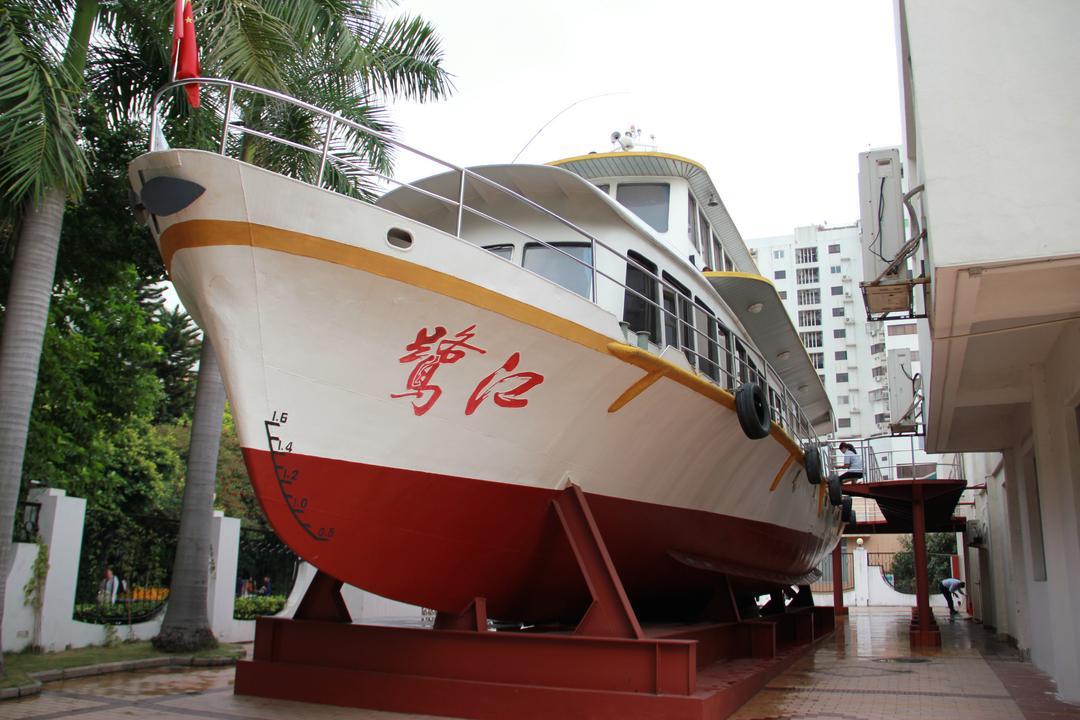
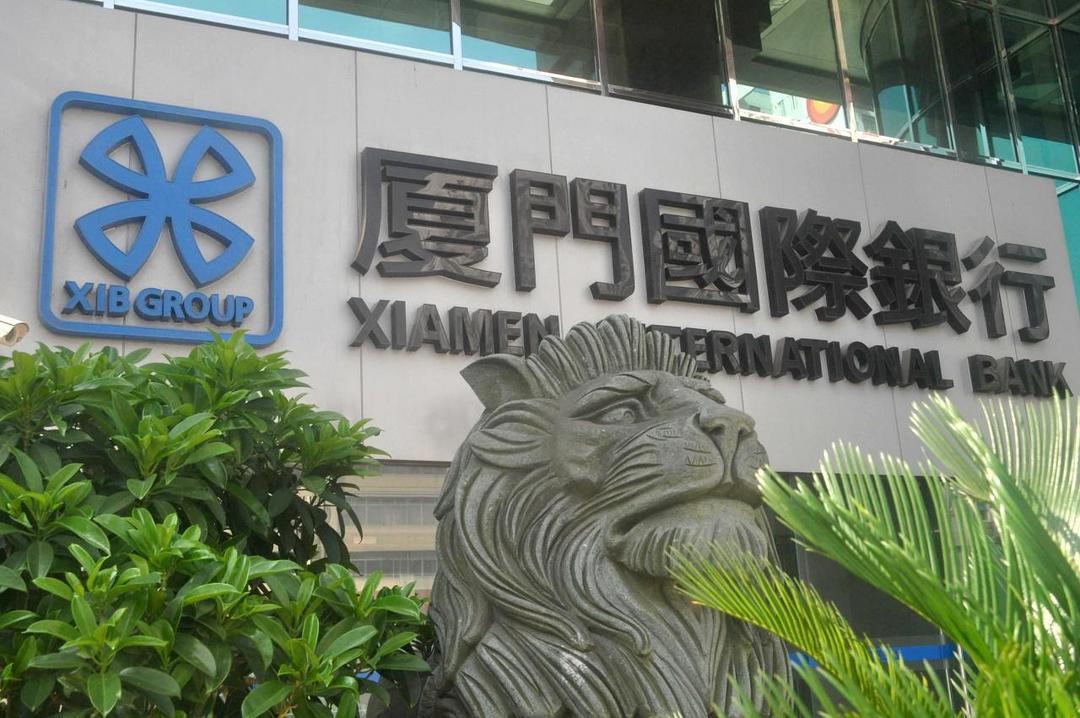


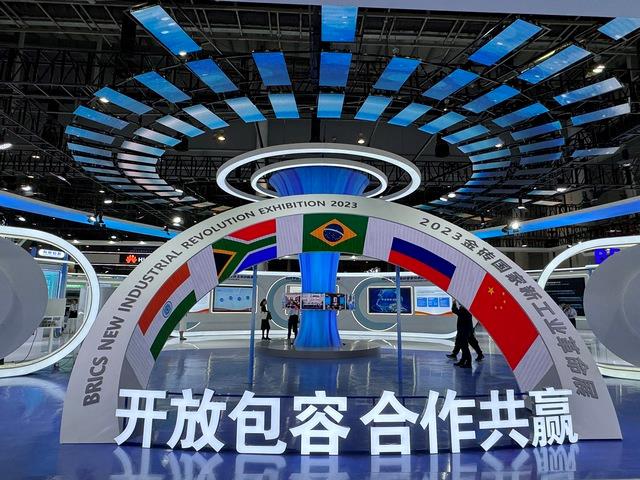
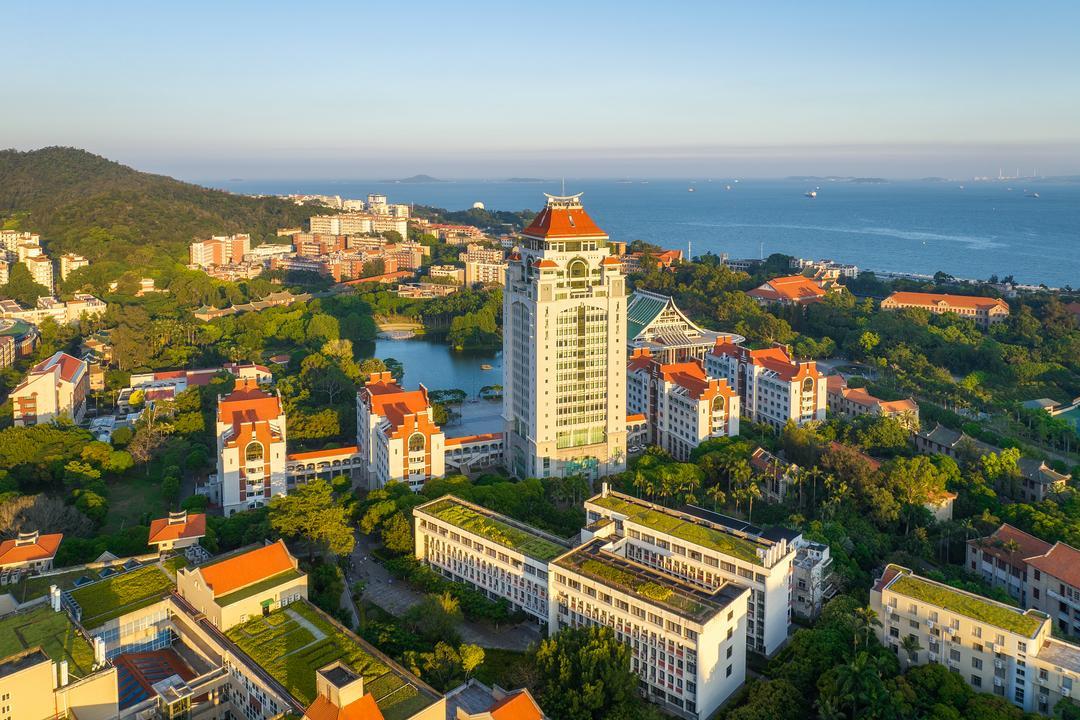
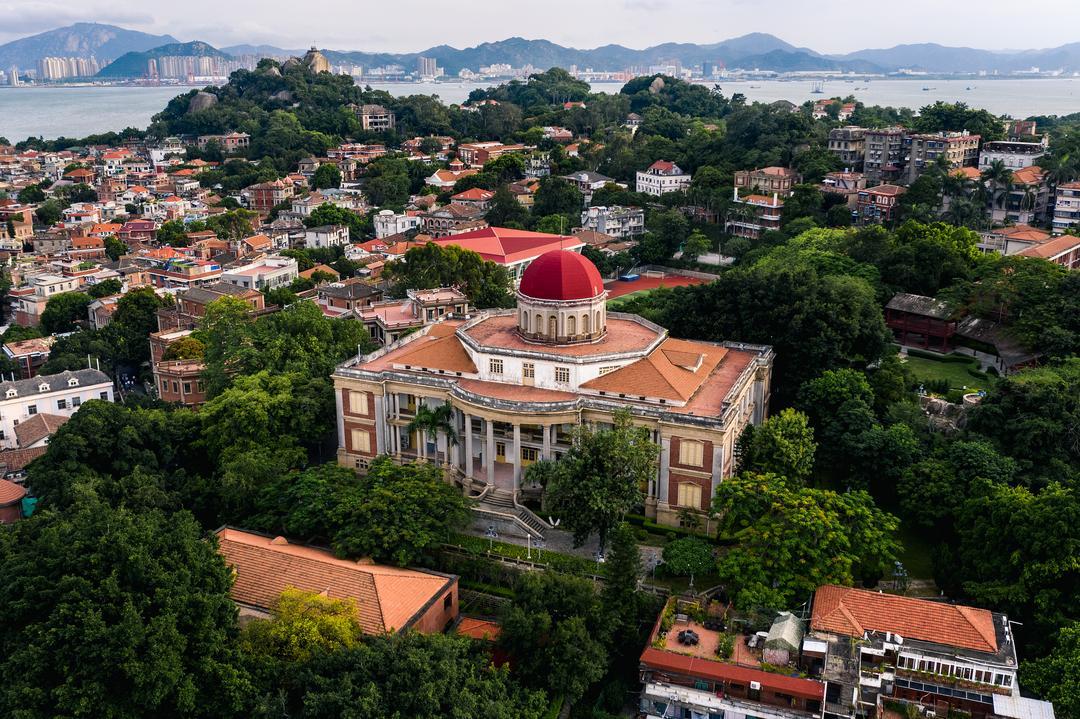
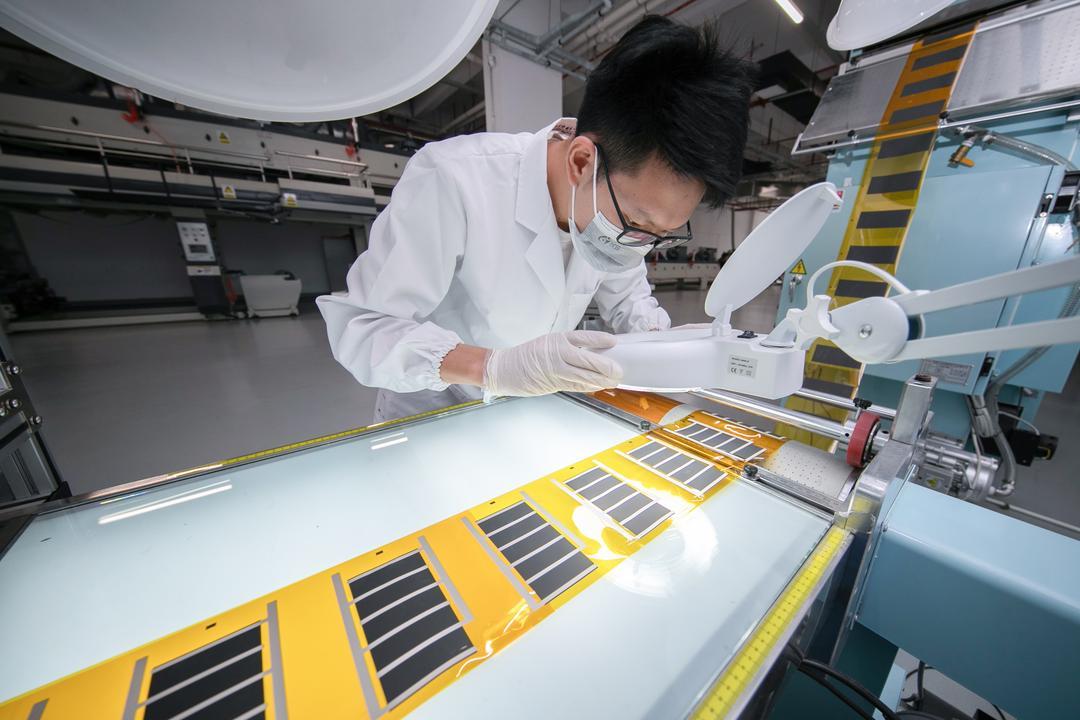
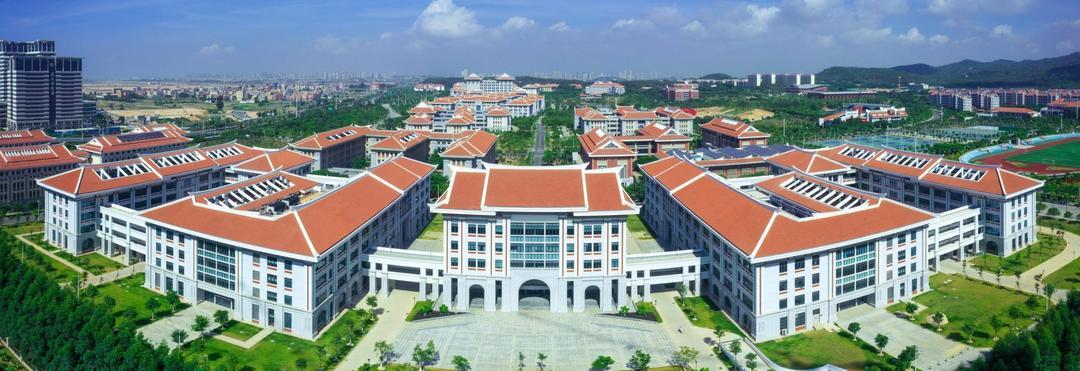
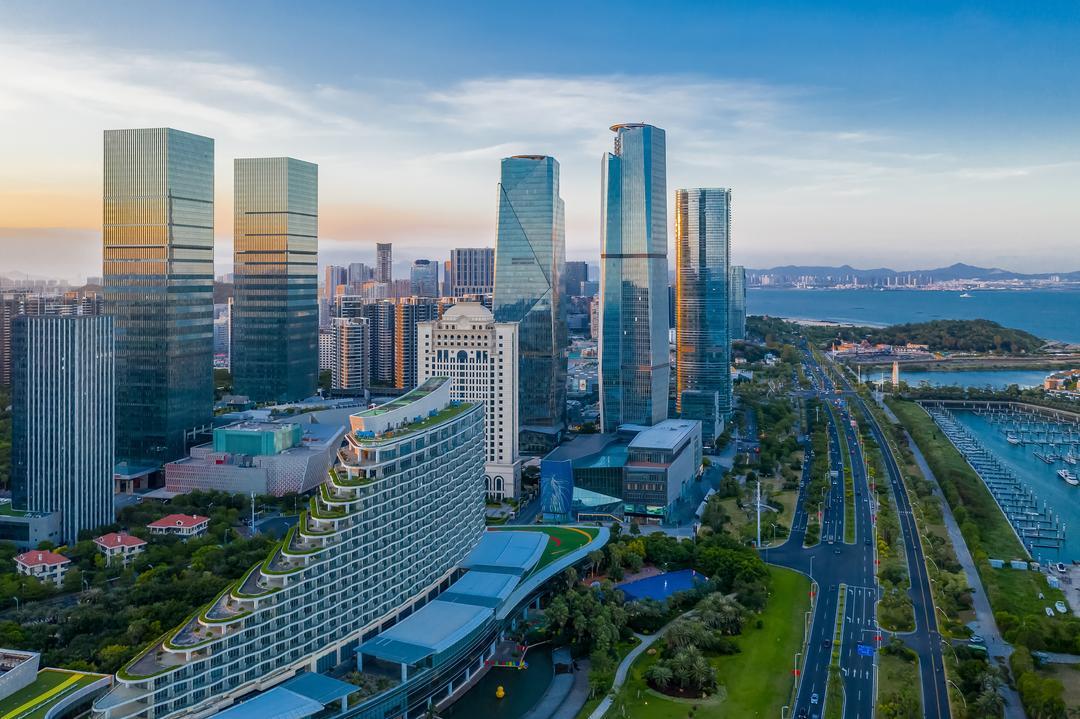
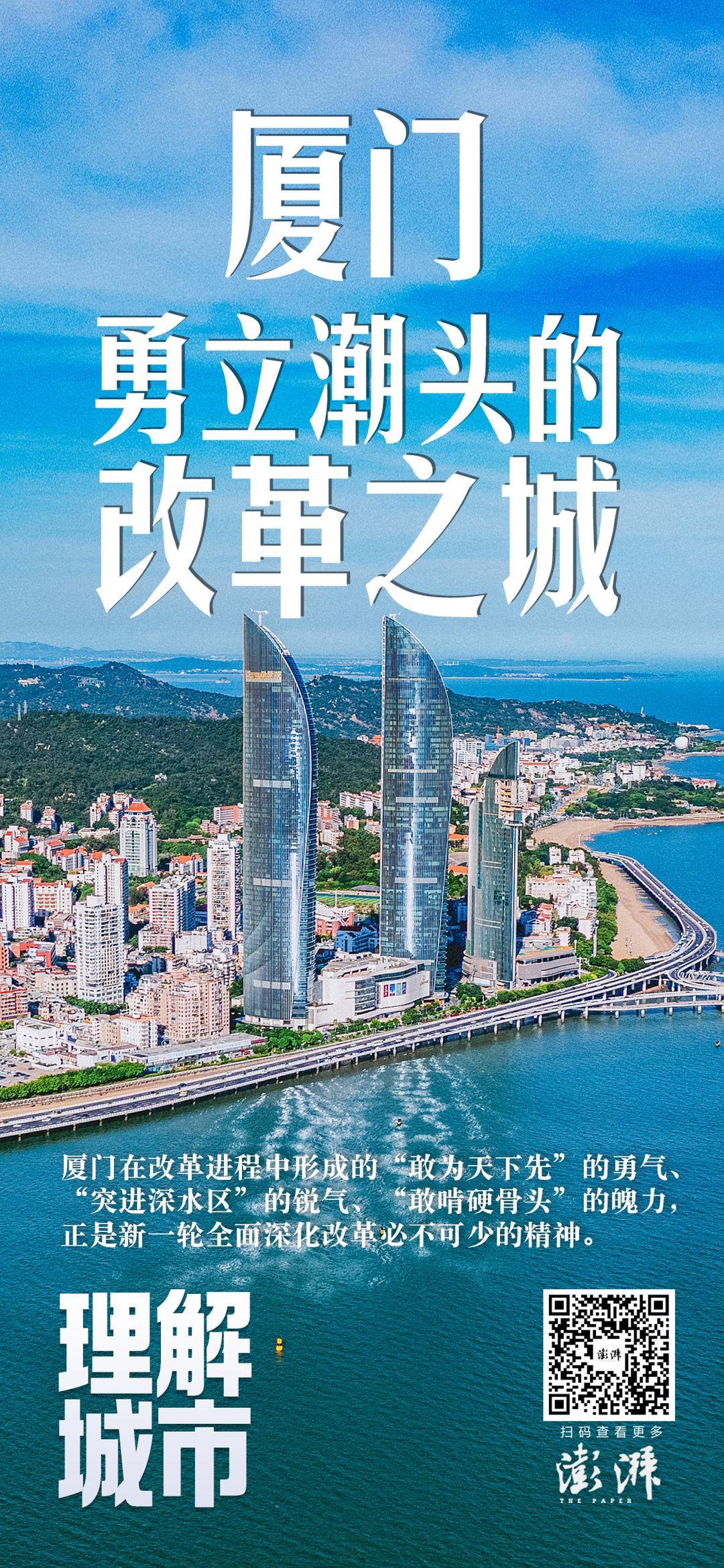
















Comments
No comment